 |
| June 25, 2019 | Volume 15 Issue 24 |
Designfax weekly eMagazine
Archives
Partners
Manufacturing Center
Product Spotlight
Modern Applications News
Metalworking Ideas For
Today's Job Shops
Tooling and Production
Strategies for large
metalworking plants
James Bond's new ride is Aston Martin Valhalla hypercar
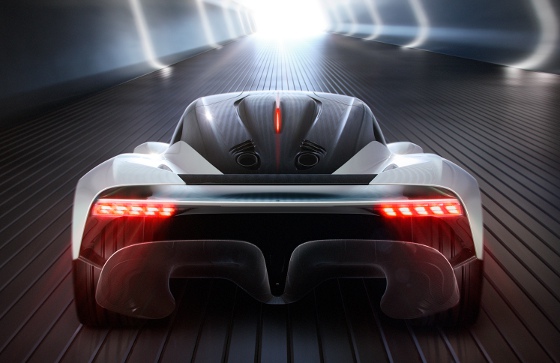
James Bond will drive Aston Martin's latest (real) mid-engined hypercar, called the Valhalla, in the franchise's new movie scheduled for release in 2020. We don't know if 007's new wheels will sport additional lasers, rocket motors, missiles, or a self-destruct button in the movie, but it will use real-world flexible wing technology validated by NASA to keep it low and fast.
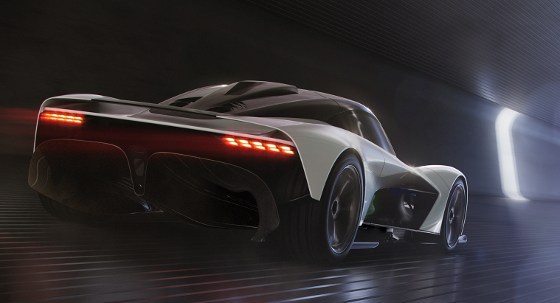
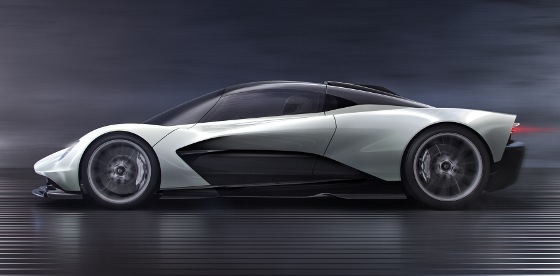
Details are pretty scarce, but here is what we know so far. Admittedly, it's a mixed bag.
Aston Martin debuted the new car as a design concept -- code-named AM-RB 003 -- at the 2019 Geneva Motor Show in March. Red Bull Advanced Technologies has had a heavy hand in the design and engineering of the car, incorporating technologies taken directly from Formula One. The car also shares design and tech from the Aston Martin Valkyrie, another mid-engine hypercar the brand is developing.
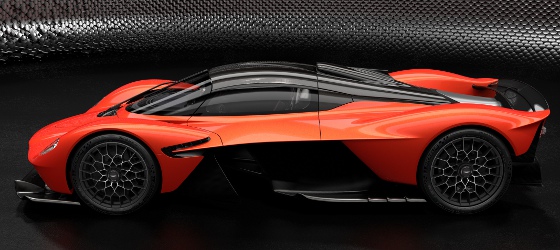
Aston Martin Valkyrie prototype (6.5-liter V12 engine with 1,160 bhp peak power using hybrid powertrain) -- kind of the souped-up big brother of the Valhalla. It blurs the lines between Formula One racer and street-legal road car. Final prototypes still being built. [Note: All other images in this article are the Valhalla, unless noted otherwise]
"We were quite deliberate in AM-RB 003 [Valhalla] to not disguise its lineage, but we were equally emphatic that it would be a distillation of Aston Martin Valkyrie and not a dilution," said Miles Nurnberger, Aston Martin Director of Design, back in March. "The design isn't as extreme in some areas, but it pushes just as hard in others, and is even taking certain ideas and concepts a step further. That's a natural function of design evolution, but also testament to just how great an influence working with Red Bull Advanced Technologies on Aston Martin Valkyrie has had on our approach to everything that's come since."
The Valhalla will be the first car to receive Aston Martin's new hybrid turbo V6 engine, but the company did not give top speed or rpm specs. The U.K.'s The Sun newspaper said June 19 the car will have a 3.0-liter engine that will do 200+ mph.
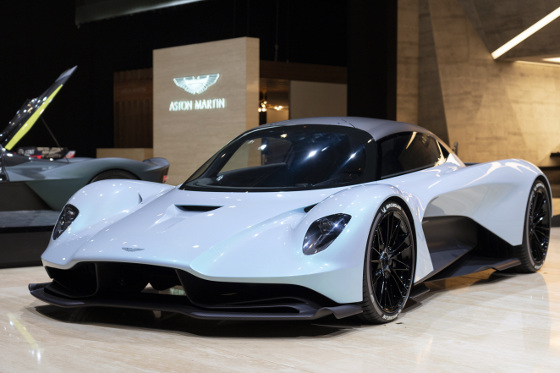
The Valhalla features a pronounced front keel and large rear diffuser, with the underfloor generating the bulk of the downforce. It also benefits from next-generation aircraft morphing technology to create a variable airfoil across the entirety of the rear wing. The technology is called FlexFoil, and it was developed by FlexSys Inc. (Ann Arbor, MI). It has been validated by NASA through extensive performance and acoustic flight testing, with Aston Martin the first to implement this cutting-edge aerospace technology in the automotive industry.
VIDEO: Professor Sridhar Kota (also FlexSys founder and CEO) explains Distributed Compliant Design -- the basis for the FlexFoil system -- in this video produced by The University of Michigan media group.
In aerospace, the FlexFoil control surface changes the camber of a wing during flight by shape morphing rather than through the heavy and cumbersome mechanisms of conventional wing flap assemblies.
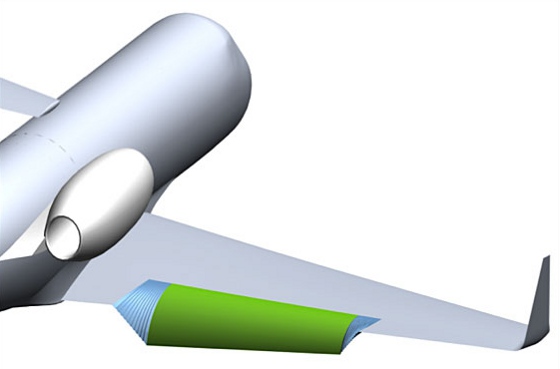
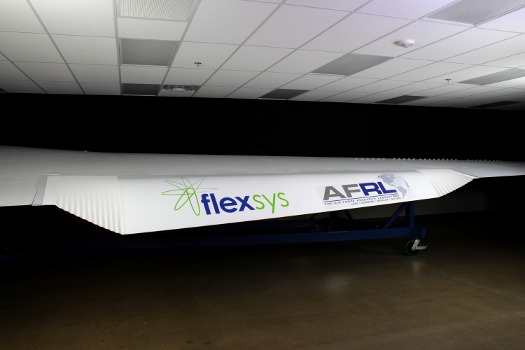
FlexSys Adaptive Compliant Trailing Edge (ACTE) flap technology bridges gaps in wing for a seamless surface. [Credits: Flexsys Images courtesy of NASA]
According to FlexSys, "shape morphing performs the large controlled deformations (from -9 deg to + 40 deg) needed for landing and takeoff using a surface that is integral to the rest of the wing. FlexFoil also permits discrete span-wise twist of the compliant edge at high response rates (up to 30 deg/sec) to reduce induced drag and withstand external loads (air loads, inertial loads etc.), yet it is strong and stiff with very small distributed strains on the mechanical structures and control surfaces."
FlexSys has worked with Aston Martin over the past several years to develop technologies ranging from the the Valhalla's new morphing wing to the Valkyrie's windshield wiper system that enables rain clearance throughout the entire sweep of an extremely complex windscreen (the wiper is mentioned in the video above).
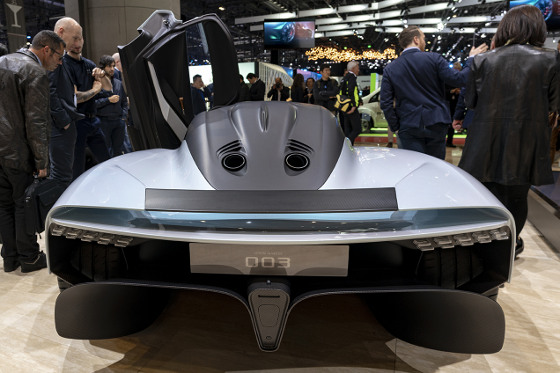
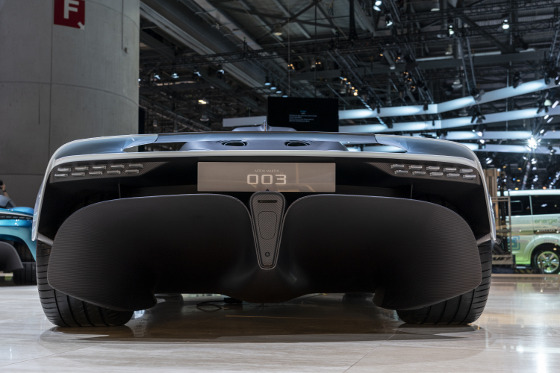
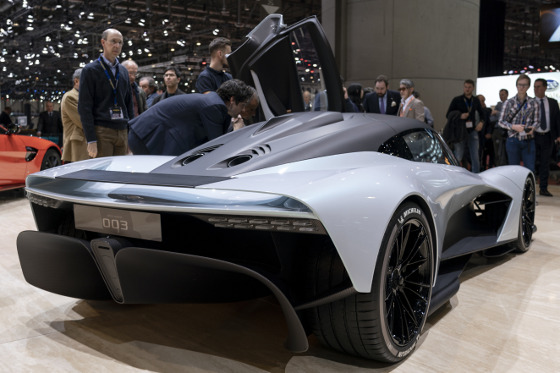
The shape adaptive rear wing on the Valhalla (that suspended flat black piece at the top of the back) allows for the car's downforce to be changed without changing the mounting position of the wing, resulting in a seamless design with high performance, improved efficiency, and reduced wind noise. Actuators inside make it flex, although it appears flapless and seamless. In addition, the turbulence and associated drag increase found in current, "state-of-the-art" active wing designs is virtually eliminated.
Aston Martin says the production design will allow for even larger leading- and trailing-edge deflections than shown in the 2019 Geneva Motor Show concept, and it will incorporate greatly increased actuation rates to allow real-time response to changes in the vehicle's dynamic state.
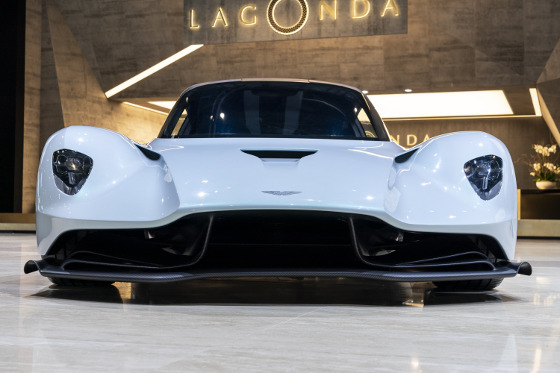
Across the top surfaces, other aerodynamic demands create a similar shape to Aston Martin Valkyrie, but new lamp shapes at the front and rear ensure this car has its own identity. The lamp graphics are unique, but the internals are taken directly from Aston Martin Valkyrie due to their lightness, with the combined weight of all four units totaling less than the weight of one headlamp used in the standard Aston Martin DB11 coupe.
The Valhalla features a lightweight carbon fiber structure and is clad in carbon fiber bodywork that has been sculpted for maximum aerodynamic effect.
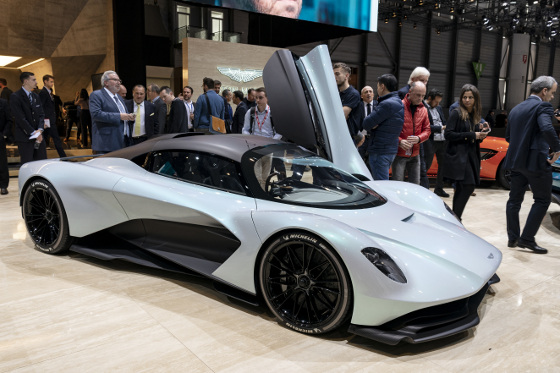
One of the biggest differences between the Aston Martin Valkyrie and the Valhalla is the size of the cockpit -- the Valhalla's is intentionally bigger. It also has flip-up doors that include part of the roof structure. Very Hollywood.
The cockpit itself showcases a bold new design and material philosophy aimed at achieving a reduction in visual clutter. Aston Martin calls this "Apex Ergonomics" and says it relies on the perfect alignment between the centerline of the driver's back, steering wheel, and pedals and the careful positioning of other elements throughout the cabin to support this driver-focused experience.
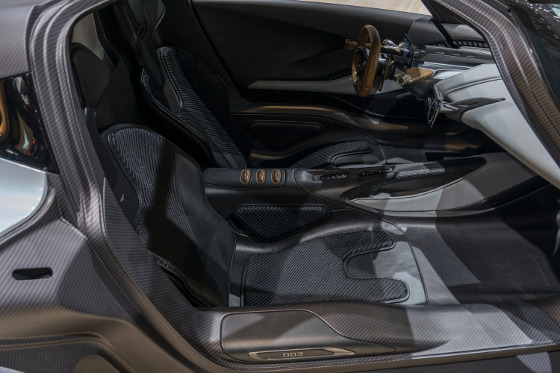
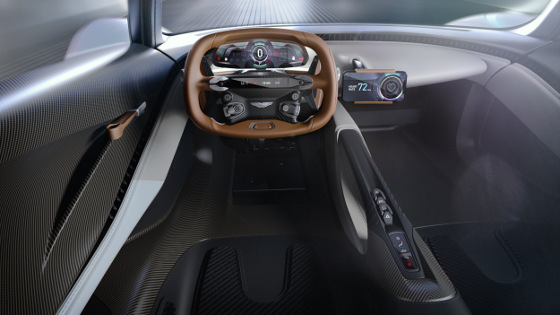
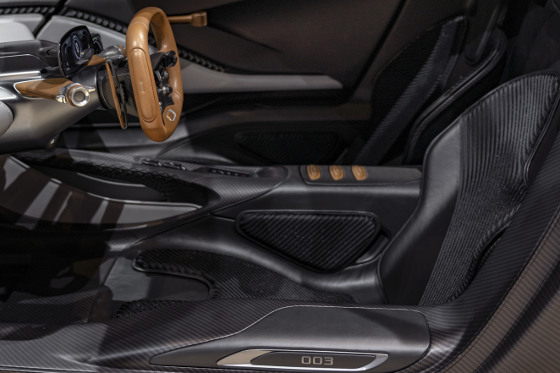
It is somewhere between aero controls design and a Tinseltown spaceship look. Minimal, yet there's a lot going on.
The main display screen is mounted on the steering column. It looks tiny compared to the bigger-is-better trend that is currently sweeping the consumer market when it comes to displays. Aston Martin says the wheel will not obstruct the display view when turning.
Another visual expression of Apex Ergonomics can be found in the wraparound band that provides a distinct and functional divide between the lower section of the cockpit and the upper section, defined by the extreme curvature of the windscreen. Featuring recessed vertical gills, this band provides discreet delivery of audio, ventilation, and ambient lighting and creates a bold yet fully integrated technical feature as opposed to the traditional placement of individual air vents and speakers.
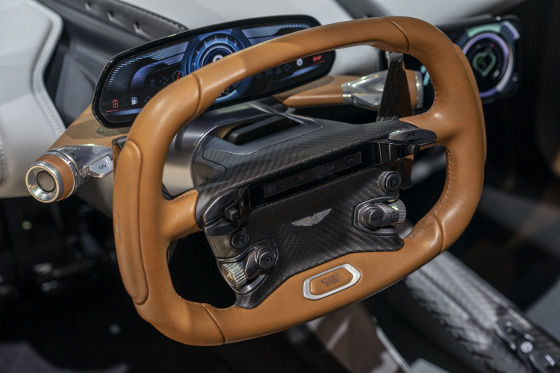
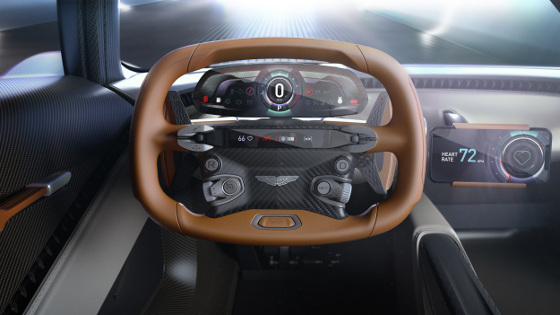
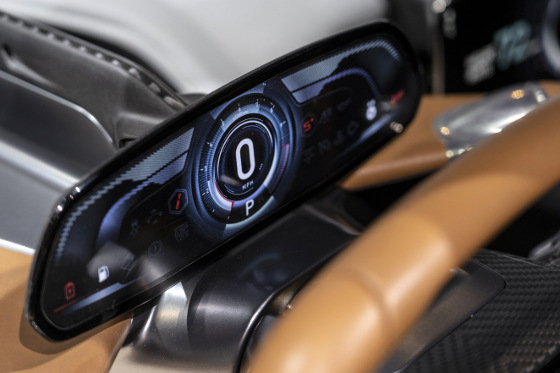
Since lightweighting is important, the designers have 3D printed the center console, which they say has removed 50 percent of the mass, and integrated functional switches.
Another interesting feature for the car is that it will be the first street-legal car in the world to use the Nexcel sealed oil system, which Aston Martin says facilitates oil changes in under 90 sec. This innovative system from Castrol was first used on the track-only Aston Martin Vulcan and subjected to numerous Nürburgring 24 Hours races to prove out its performance and durability. It's been described as making an oil change as simple as changing a printer cartridge.
Hey, 007 has gotta get the oil changed too. And if he can keep his hands clean, all the better. Weirdly, that is very James Bond -- but we doubt it will appear in the movie.
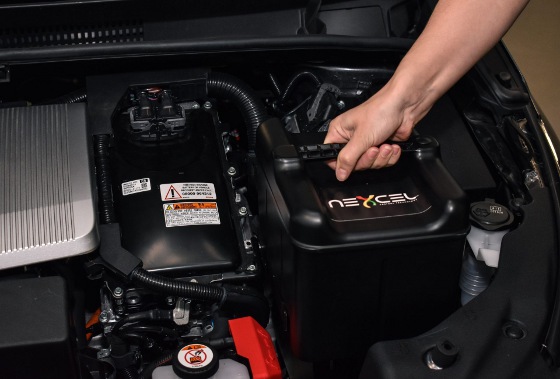
The mess-free Castrol Nexcel oil-change system. In this example (not on an Aston Martin), the oil cell dock is located in the engine bay in the site formerly occupied by the 12-V battery, which has been relocated under the rear passenger seat. [Image courtesy: Castrol]
Pricing has not been released, but Aston Martin says the Valhalla will have its production limited to 500 coupes worldwide.
The new movie (untitled so far and called "Bond 25" in the trade) will be the 25th for the franchise, so expectations are running high that there will be many surprises both old and new because it is a big milestone to celebrate. The movie will also feature the iconic Aston Martin DB5 and the Aston Martin V8. Both have been featured in past Bond films.
But the real question now is, what will the new villain drive?
Sources: Aston Martin, FlexSys, The Sun, Castrol, NASA
Published June 2019
Rate this article
View our terms of use and privacy policy
